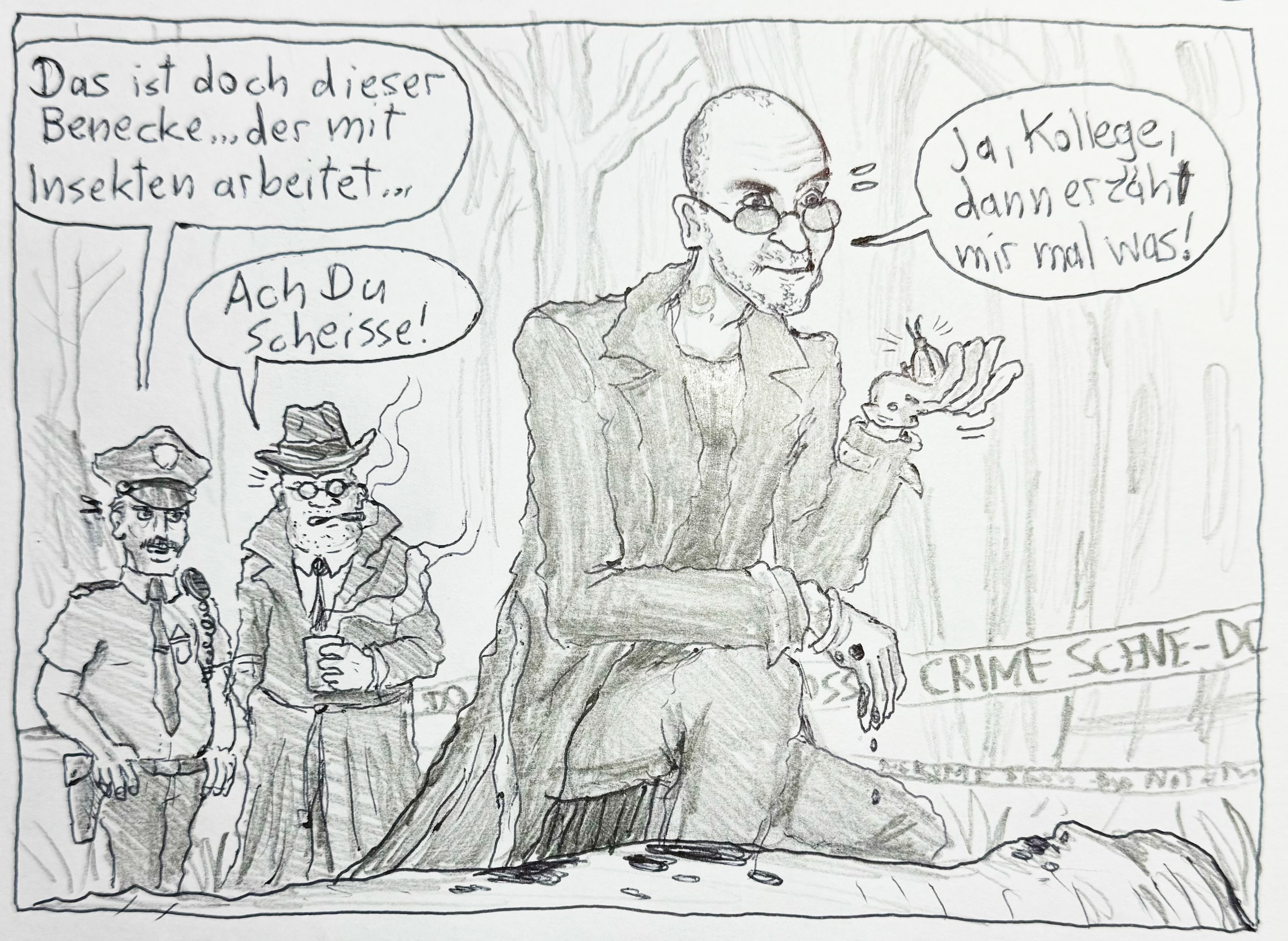Source: Nature Nr. 410:752 (2001)
Maggots, Murder and Men
Murder most putrid
by MARK BENECKE
Maggots, Murder and Men: Memories and Reflections of a Forensic Entomologist, by Z. Erzinçlioglu, Harley Books: 2000. 256 pp. £13.95
Here is that rare thing, a good popular book on forensic entomology that is also an illuminating read on forensic science itself and on the art of being an expert witness. Zakaria Erzinçlioglu (a.k.a. Dr Zak), a forensic entomologist for more than 20 years, covers not only the wonderful world of insects as a tool in forensic investigations, but also the Tertiary geological period, O'nyong-nyong disease, Napoleon Bonaparte, human behaviour, maggot therapy and Sherlock Holmes.
*© Photo by K.A.S. Sandra
Starting from the statement that "a dead human body is a magnificent and highly nutritious resource", mostly for invertebrates, Erzinçlioglu sets off on a fascinating trail that takes in both forensic entomology and the nature of forensic evidence. The insect evidence in two of his cases perfectly illustrates the fact that, although much can be ignored at a crime scene, it is important not to overlook vital evidence, or even its absence. In one case, the presence of winter gnats at the crime scene was a plain indication that the victim had died in winter. In another case, however, the presence of minute black scavenger flies (which start to breed earlier in the year than other flies) could not be interpreted correctly without recognizing the absence of blowfly maggots. If death had occurred in summer, blowfly maggots would have outcompeted the tiny scavenger flies. The victim must therefore have died in the spring, when blowflies are not active.
In contrast to the everyday work of most natural scientists, forensic scientists, especially the few who work at crime scenes, have to accept that controlled experimental conditions must frequently remain a dream. The complexity of influences in real-life situations can only be simulated by a large number of laboratory experiments, for which there may be no time. To highlight this problem, ErzinÁlioglu discusses the scientific method itself. Because physical evidence from a crime scene can often only be interpreted, instead of delivering an obvious absolute truth, ErzinÁlioglu warns against the danger of going too far. To avoid this trap, a forensic expert not only needs experience but must also have a clear idea of which questions can be answered by a particular investigative method and which cannot.
Case-work can be thrilling, but is also a personal challenge. As Erzinçlioglu authentically describes, one has "to visit the seediest of dwellings at the most unsocial of hours", carry out "post-mortem examinations late at night" and be "ferociously cross-examined by hostile barristers in court". He shares with the reader the mind-broadening knowledge he has gathered from working in such conditions, and which is the forensic scientist's reward.
Only a mixture of deep specialist knowledge (in Erzinçlioglu's case, the biology and anatomy of flies and their maggots), lots of enthusiasm and curiosity, up-to-date knowledge of neighbouring disciplines and a touch of singularity can make a scientist into a 'real forensic', and Erzinçlioglu is a prime example. In his discussions of the nature of justice he has already ruffled some feathers, for he points clearly to unpleasant and often neglected aspects of the justice system, such as incompetent defence consultants who muddy the waters and the fact that forensics in Britain apparently now has to operate according to 'free market' rules.
The energy and efforts of scientists such as Erzinçlioglu have put forensic entomology back into routine use ó as long as a forensic entomologist is available. A special issue of Forensic Science International on forensic entomology is due later this year. So buy this book and enjoy the author's witty, wise and comprehensive thoughts on forensic entomology and forensics in general. Also, try not to steal the lovely black-and-white drawings by Michael Roberts as slides for your future forensic presentations ó if you can.


